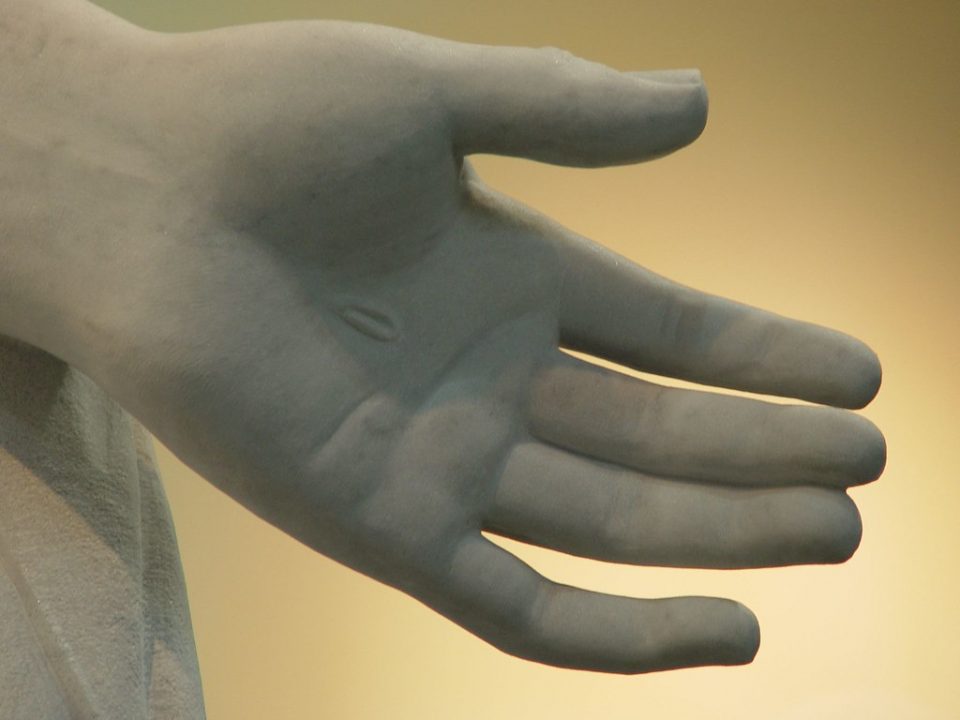
Don Cupitt: A Personal Reflection
June 2, 2025
The Death of Us
June 25, 2025Queer Deaths and Queer Resurrections:
How a transgressive reading of the life of Christ reaffirms queer resurrection hope
By Reuben Jenkins
“Jesus’ life according to Mark is signed by a multitude of deaths… [T]he queer reading of the scriptures is not progressive: it is transgressive.” – Marcella Althaus-Reid[1]
“The kiss of death became the kiss of life – a new lesbian and gay movement emerged, stronger than ever, more angry, more focussed.” – Derek Jarman[2]
When embarking on a queer reading of Christ in the scriptures, Marcella Althaus-Reid warns against reading the life of Christ as a ‘progression’ – from young preacher, to healer, to prophet crucified; one life, journeying towards one death. Instead, she advocates a transgressive reading, which enables us to identify the many deaths – and many resurrections – of this queer Christ.
One way in which we may read the life of Christ ‘transgressively’ is by paying attention to the ways in which Jesus subverted the expectations of his day, both in his own actions and in the parables he told. And we see too how Christ continues to subvert the expectations of our day – loving and affirming those whom society has deemed unwelcome; unloved; ‘queer’. On top of this, a transgressive reading of the sort that Althaus-Reid advocates involves resisting too straightforwardly teleological an engagement with the life of Christ, and instead considering him as one who experiences multiple deaths and multiple resurrections. In her commentary on Mark’s Gospel, Althaus-Reid draws out the ‘deaths’ experienced by Christ which precede his crucifixion. He is subject to social death, in his departure from his family of birth and his eschewing of a permanent social location; to economic death, for in his poverty he is rendered invisible to the economic powers of his day; and to death in the form of redundancy when the crucifixion marks him out as an “unemployed God, a devalued, misunderstood God outside the market.”[3] “These,” she writes, “are the deaths of a queer man.”[4] Indeed, reading the life of Christ in dialogue with queer experiences of ostracism, familial rejection, and rejection of identity reifies his solidarity with the queer community and queer experience.
But just as Christ experiences many deaths during his life, he too experiences many resurrections. In Althaus-Reid’s reading, these resurrections often take the form of Christ being reconstituted and lifted up, from a state of death to a state of life, by and in community. His isolation is followed by the forming of community when he meets and befriends Simon and Andrew; he expresses his identity and purpose in acts of communion with people designated impure and unclean; and his poverty does not limit his ability to share with and feed others abundantly. Reading the life of Christ in this way reveals a particular assurance of hope for queer people: that even when our experiences are ones of death, or loss, or disenfranchisement, the reality of the resurrection works to bring us to new life again and again, across the whole course of our lives.
Such a reaffirmation of hope is sorely needed in the fallout of the recent Supreme Court ruling that the legal definition of a woman is to be based on biological sex – a ruling which, despite lip service to a continued commitment to trans rights, has led to an intense escalation of transphobic rhetoric in the news media and popular discourse, to an increase in incidents of transphobic violence and hate speech, and to interim EHRC guidance that threatens to banish trans people from public life.[5]
The reflections shared last month by members of the Student Christian Movement Trans Theology Group emphasise the particular poignance – and pain – of the Supreme Court ruling’s coincidence with Holy Week for trans Christians. And the particularity of these reflections in the attention they pay and the voice they give to trans experiences, as they relate to the suffering of Christ, is vitally important. Indeed, particularity must be foregrounded in any theology which seeks to liberate those who have been marginalised; trite reassurances that the universal nature of Christ’s suffering supersedes the need for such particularity works at best to conveniently ignore, and more often to deny and perpetuate, the reality and extent of the struggles and multiple deaths experienced by queer people.
Contemporary queer history reveals that the patterns of death and resurrection found in the life of Christ, are too a corporate reality, borne by the whole body of the queer community. The work of the late filmmaker, artist and activist Derek Jarman (1942-1994) draws our attention to this reality; Jarman’s own queer reading of the Easter story finds creative expression in his 1990 film The Garden, which casts two queer men in the role of Christ and employs the Passion as a metaphor for his experience of ‘crucifixion’ as a public figure who was both openly HIV+, and avowedly queer.
Moreover, Jarman’s 1993 memoir At Your Own Risk captures the nonlinearity of the struggle for queer liberation, and drapes the crucifying impact of Section 28, which prohibited the ‘promotion’ of homosexuality in schools or by local authorities,[6] in christological metaphor: “Herod run rampant among the homo innocents.”[7] But also explicitly christological is Jarman’s reflection on the failure of Section 28 to achieve its true aim – the eradication of queer people from the public sphere. Instead, “The kiss of death became the kiss of life,” and galvanised a new queer rights movement which proclaimed a message of life in the midst of death.[8]
Venturing upon queer readings of scripture, and christological readings of queer history, we not only see that Christ died and was resurrected throughout the whole of the Gospel narrative, but also come to discover that resurrection can be – is – as much a reality of the queer experience as death.
In a speech delivered at London Trans+ Pride in 2024, actress Yasmin Finney spoke to this pattern of death and resurrection, saying, “The LGBTQIA+ community is on its knees. And through history we have been knocked down, we have been ridiculed, we have been attacked. And through history, we rise.”[9]
The same conviction has been echoed in recent weeks at trans rights demonstrations up and down the country; the demonstration that took place in London on 19th April – Holy Saturday – saw an estimated 20,000 members of the public come together in protest of the recent Supreme Court ruling, and the ongoing scapegoating, vilification and demonisation of transgender people. Althaus-Reid affirms that, “in every community of excluded people and in every inch of the struggle for sexual and economic justice, the queer God manifests Godself with full glory, power and grace.”[10] Even on Holy Saturday, the queer Christ is ever resurrecting – and the queer community is no different.
Reuben Jenkins is a Public Visits Guide at Derek Jarman’s Prospect Cottage, Dungeness, and Deputy Convenor of the Student Christian Movement of Great Britain. He holds a BA in Theology from the University of Cambridge.
Notes
[1] Marcella Althaus-Reid, ‘Mark,’ in The Queer Bible Commentary (London: SCM Press, 2006) 520-525.
[2] Derek Jarman, At Your Own Risk: A Saint’s Testament (London: Vintage, 1993) 128.
[3] Althaus-Reid, ‘Mark’ 520.
[4] Ibid.
[5] See TransActual’s statement on the interim EHRC guidance: https://transactual.org.uk/blog/2025/04/26/statement-on-ehrc-guidance-on-single-sex-spaces/
[6] https://www.legislation.gov.uk/ukpga/1988/9/section/28/enacted
[7] Jarman, At Your Own Risk 128.
[8] Ibid.
[9] https://www.facebook.com/reel/697690099533423/
[10] Marcella Althaus-Reid, ‘Mark’ 525.





3 Comments
All very peculiar, queer and strange. Somewhoat flummoxed. Not a good PC answer, sorry
I agree that Jesus, according to the gospels, befriended the outcasts of his day. However he welcomed them into the band of disciples to work for the kingdom. So the Samaritan was praised, not for being a Samaritan, but for not passing by on the other side like the priest and Levi, but at some risk, for helping the injured man. The woman was praised not for being a woman but for kissing and annointing Jesus’ feet. The leper was praised not for being a leper or even a healed leper but for returning to give thanks.
So those of us who are queer or part of an ostracised community are welcome to join the workers for the kingdom. But whatever our identity, we shall ask be judged by our work alone.
People need to read this now more than ever – beautiful article! Let’s all show marks of being true Christians (Romans 12:9–21)